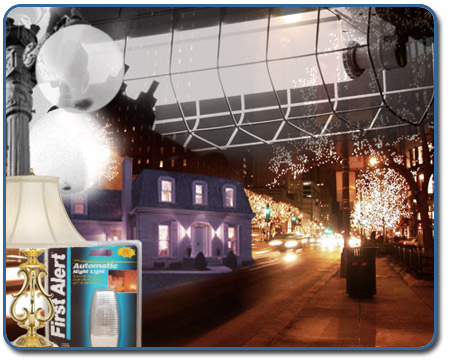Welcome to Lesson 6!
Welcome to the lesson on lighting. In this chapter, we are basically going to look at basic lighting principles and definitions. Light can be generated in several ways, and we are going to look at the ways in which we can generate light and discover which is the most efficient of all these methods. We will also learn a little bit about some of the definitions, like how light is measured and what the intensity is, and how to measure the efficacy or efficiency of lighting and so on and so forth.
We will also look at the different types of bulbs that are available around for us to use. The U.S. is currently in a transition to more efficient lightbulbs. 10 years ago, incandescent lightbulbs dominated the market, but now ~100 % of all lightbulb replacements are some form of energy efficient model. Some of you may be familiar with light emitting diode (LED) and compact florescent (CFL) bulbs, and we will be looking at how each of these types work and also how the light is generated. What is the efficiency with which we generate lighting?
As far as calculations are concerned, we will be doing the most important calculation in this chapter again, and that is life cycle analysis. Life cycle analysis is, as I mentioned in the last chapter, the total cost over the life cycle of a product. The life cycle begins the moment you buy and lasts until the moment the product dies or is put to retirement. Until then, what does it cost? In other words, the costs would be to buy it and to feed it the electricity or the energy, and then if there are any maintenance costs, they are also involved. So we have to calculate all of these aspects over the lifetime of a particular bulb, and then compare bulb A with bulb B. That life cycle analysis is what you will have to spend quite a bit of time with and make sure you understand it.
We'll also consider the way we measure the efficiency and the efficacy of lighting, and also improved lighting controls. If we have an existing home or existing system, what can we add; how can we improve the efficiency? How can we get more light for less energy? So this is a chapter where we can work to save a lot of energy. And we spend about, almost 40 billion dollars a year in this country on lighting, so easily we can save about 20 billion dollars and the associated energy that is involved and the impact. Think about it -- the impact that we can make on the environment by using more efficient light. So let’s get started.
Lighting
These are some statistics on lighting in the US. Information like this does not get updated often (The U.S. hasn't been spending money on these types of studies), so here is where we were as of 2015:
- Lighting accounts for 5 to 10 percent of all electricity consumed in the United States.
- An average household dedicates ~4 percent of its energy budget to lighting. Commercial establishments consume about ~20 percent of their total energy just for lighting.
- Technologies developed during the past 15 years can help us cut lighting costs 30 to 75 percent while enhancing lighting quality and reducing environmental impacts.
Lesson 6 Objectives
Upon completing this lesson, students will be able to:
- explain basic lighting principles and definitions;
- list the various types of lighting and explain how each type works;
- describe energy efficient lighting options;
- calculate life cycle costs (LCC) for different types of lighting.
Questions?
If you have any questions, please post them to the General Course Questions forum in located in the Discussions tab in Canvas. While you are visiting the discussion board, feel free to post your own responses to questions posted by others - this way, you might help a classmate!
